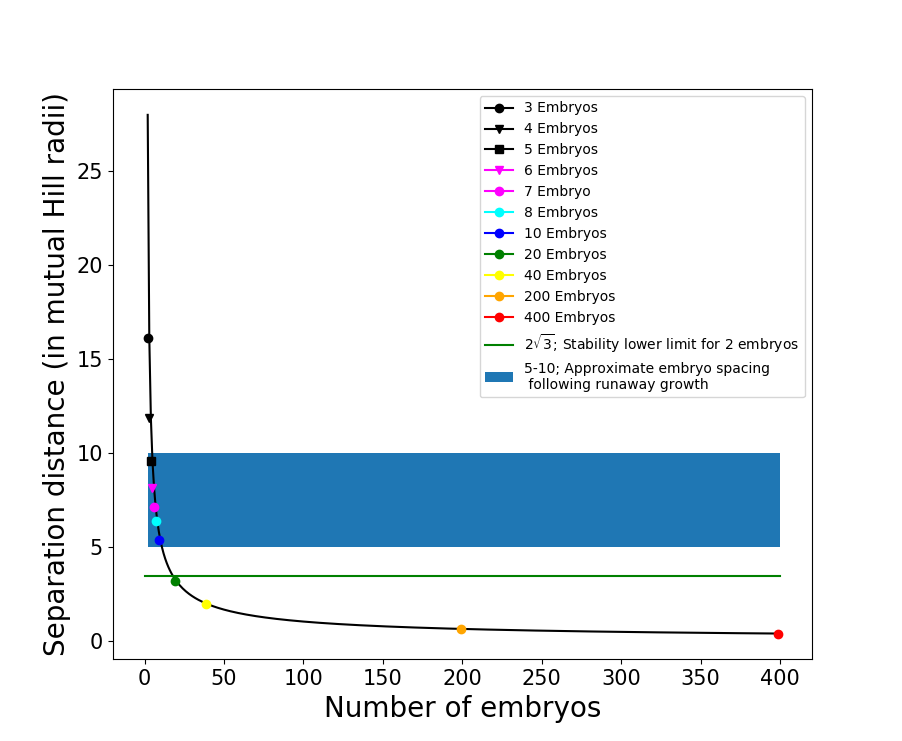Forming Terrestrial Planets from a Narrow Annulus
Lexi Detweiler, Seth Jacobson
.
| Abstract | Background | Methods | Results | About Me |

BACKGROUND
Hansen's Truncated Disk
Terrestrial planet formation simulations have consistently produced Mercury and Mars-like planets with too much mass. In an attempt to rectify this problem, Hansen (2009) completed simulations beginning with a narrow annulus of tightly-packed planetary embryos, a “truncated disk,” from 0.7 to 1.0 AU. Hansen’s simulation results showed planets that looked very similar to that of our inner solar system, with Mercury and Mars-analogues of more appropriate mass than achieved by past simulations. However, Hansen’s initial conditions should be called into question. Hansen’s disk was comprised of 2 Earth-masses (M⊕) of material total, with mass spread evenly over 400 randomly spaced embryos of 0.005 M⊕ each.Mutual Hill Radius
The mutual Hill radius between two planets describes the distance at which the two objects begin to interact gravitationally, given below (Chambers and Wetherill, 1998):Runaway growth naturally produces planetary embryos with spacings of approximately 5-10 Rm (Kokubo and Ida, 1998) and the stability limit for two embryos to coexist is a distance of

Figure 1: Number of embryos plotted against the spacing of those embryos, in units of mutual Hill radii. Total mass held constant at 2 Earth masses. Marked for clarity are the stability lower limit for two embryos (Gladman 1993) as well as approximate embryo spacing for embryos following runaway growth (Kokubo and Ida, 1998).
However embryos in Hansen’s simulations are spaced
Pebble Accretion
A possible explanation for Hansen’s initial conditions that we will investigate is that the planetary embryos were formed so quickly that an extraordinarily dense annulus was formed before embryos started colliding with each other in a significant manner. An incredibly quick mechanism through which these embryos could have been formed is called pebble accretion (Drazkowska et al. 2016).Pebble accretion is a process by which small objects, ranging from centimeters to meters in diameter, are accreted onto planetesimals in a protoplanetary disk, facilitated by aerodynamic drag. The gas present in the disk causes pebbles to orbit at a sub-Keplerian velocity and drift towards the central star, frequently encountering planetesimals. This process creates embryos extremely quickly, which is why it is the mechanism explored in this paper.

. Alexandra (Lexi) Detweiler
. Northwestern REU Student 2018
. Illinois Institute of Technology